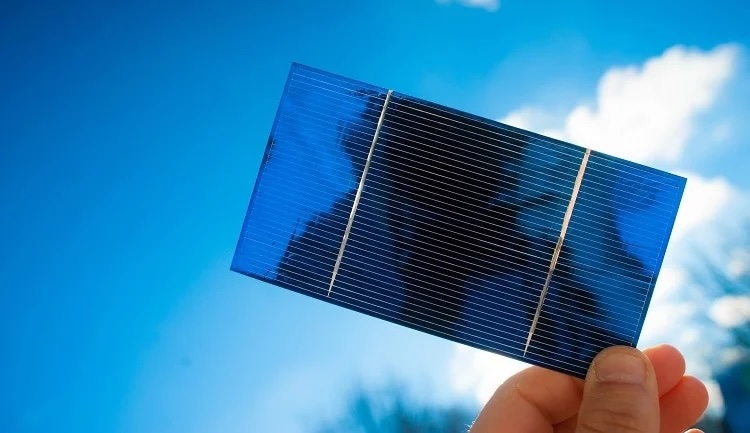Researchers Uncover Unusually Long-lived 'Polar States' in Promising Solar Materials

Above, a perovskite solar cell. A new study led by Carolina chemist Lina Quan and published in Nature Communications, revealed a surprising and potentially game-changing property: when perovskites are hit with light, they can form “polar states” that last an unusually long time—up to microseconds, or millionths of a second.
August 29, 2025 | By Dave DeFusco
In the race to create cheaper, more efficient solar panels, scientists have been focusing on a class of materials called metal halide perovskites. These materials can convert sunlight into electricity with high efficiency, are inexpensive to produce and can be made into thin, flexible films. But researchers have long been puzzled by certain behaviors inside perovskites that could hold the key to even better performance.
A new study led by Carolina chemist Lina Quan and published in Nature Communications, revealed a surprising and potentially game-changing property: when perovskites are hit with light, they can form “polar states” that last an unusually long time—up to microseconds, or millionths of a second. That might not sound like much, but in the world of electronics and energy conversion, it’s a lifetime.
“This is the longest-lived photoinduced polar state ever seen in this class of materials,” said Quan, senior author of the paper and an assistant professor in UNC’s Department of Chemistry. “It opens up exciting new possibilities for how we can design solar cells and other optoelectronic devices.”

A polar state happens when positive and negative charges in a material separate and create a built-in electric field. In perovskites, shining light can trigger this charge separation. The longer that state lasts, the more time the material has to collect and move those charges to where they’re needed, whether that’s to produce electricity in a solar cell or to create light in an LED.
“Until now, scientists thought these light-induced polar states in perovskites were too short-lived to be useful,” said Quan. “But our team’s experiments showed that under certain conditions, the effect can last thousands of times longer than similar effects in other materials.”
The researchers used ultrafast laser pulses to excite the perovskite and then measured how its structure and electrical properties changed over time. This technique allowed them to capture fleeting changes on timescales ranging from femtoseconds—quadrillionths of a second—to microseconds.
They found that once the polar state formed, it persisted far beyond the initial flash of light. The persistence appeared to be linked to subtle distortions in the perovskite’s crystal structure—distortions that trap the charges in place without completely immobilizing them.
“It’s like the light leaves a faint but long-lasting fingerprint in the material’s structure,” said Quan.
If scientists can control and harness these long-lived polar states, they could build perovskite solar cells that capture and deliver more of the sun’s energy. The effect might also be useful in other technologies, such as:
- LEDs with higher brightness and efficiency
- Light sensors that can detect very faint signals
- Data storage devices that encode information using light
Perovskites can be made at low temperatures using inexpensive manufacturing methods, unlike traditional silicon which requires high-temperature, energy-intensive processing. This could make advanced solar and lighting technologies far more affordable.
“This finding gives us a whole new design rule for perovskite-based technology,” said Quan. “It’s a reminder that these materials still have a lot of secrets to reveal.”

